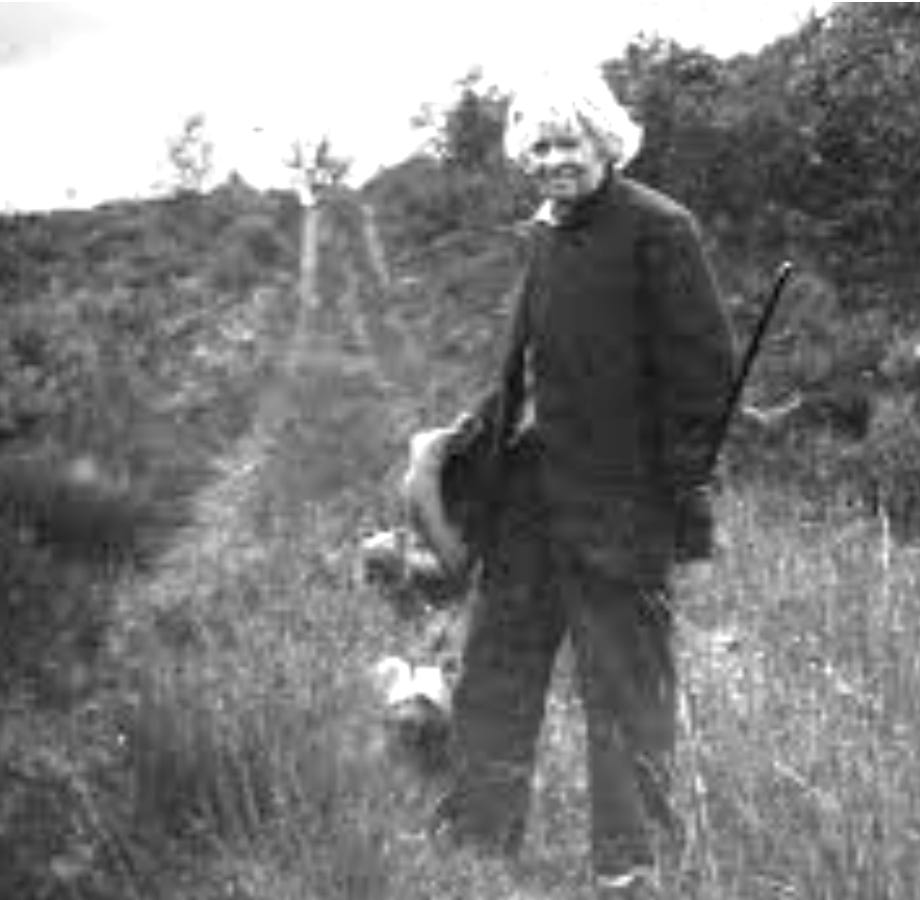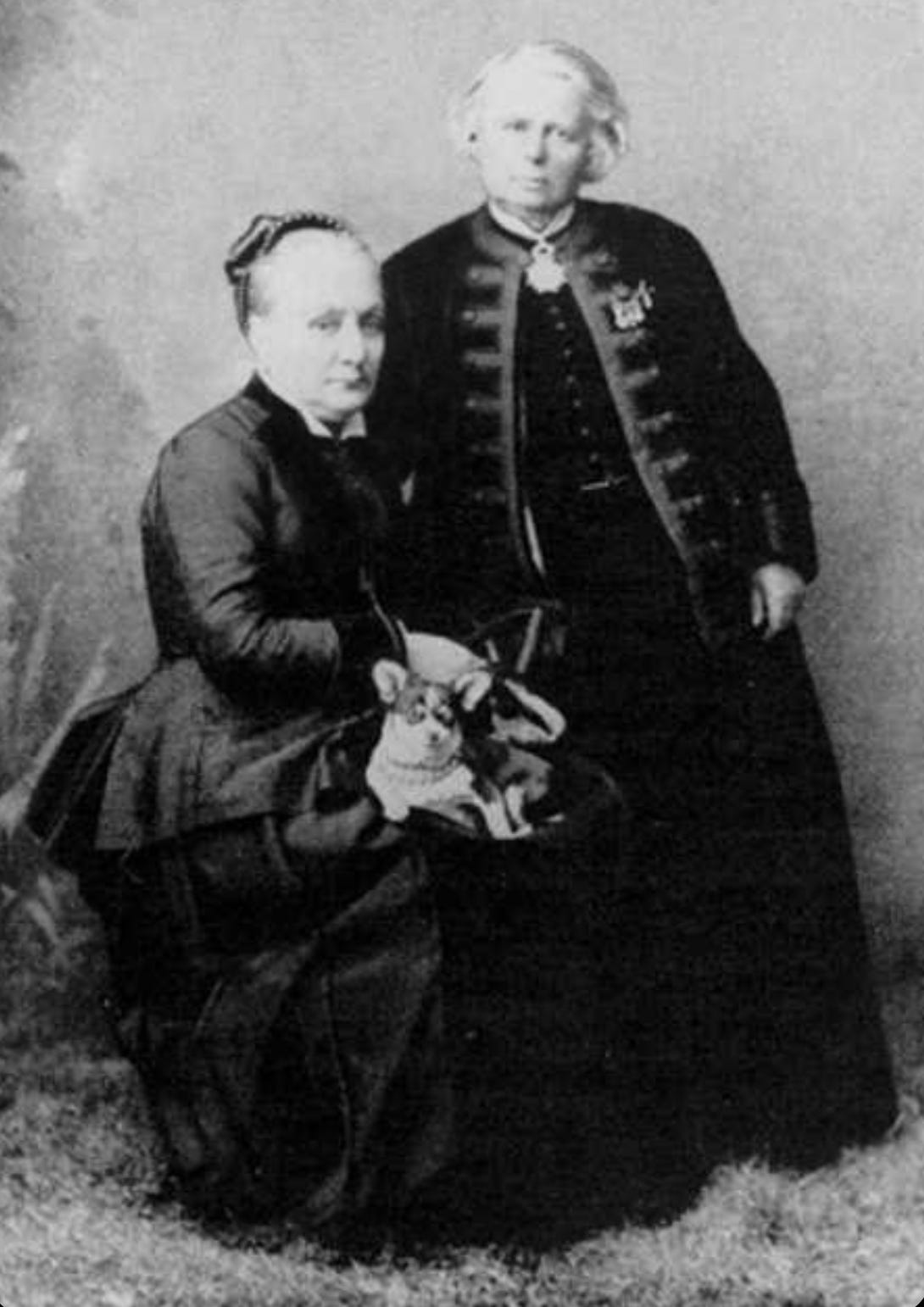Meet Rosa Bonheur, a non-conformist pants-wearing 19th-century French artist you will love
Considered one of the most important artists of all time (not just among women artists), Bonheur believed animals had souls.
This week’s newsletter visits 19th-century France, a time when women were not permitted to attend art school. A young girl, an aspiring animalière named Rosa, said F**** that.
Throughout her life, she continually defied societal norms.
She would become one of only 12 women in the 1850s to obtain French police permission to wear pants and other articles of men’s clothing.
She made enough money through the sales of her artwork, which always featured animals as the focal point, to purchase a castle. In her forest-surrounded castle, she lived with a woman and a menagerie of animals, including a lioness named Fathma. (Do all great women artists surround themselves with a menagerie of animals ?)
You may know her masterpiece, a giant, and I mean massive, eight feet tall by 16 1/2 feet long, painting The Horse Fair at the Metropolitan Museum of Art.
She was a pioneer in so many ways, and I didn’t even know about her until a few years ago. However, my painting style and the emotions behind my work are deeply indebted to her.
It’s time to introduce you to Rosa Bonheur and her dog portraits.
Rosa Always Chose Animals
Marie-Rosalie Bonheur, known as Rosa, was born in Bordeaux, France, on March 16, 1822. At a very young age, Bonheur would spend time with her father while he taught art. She would practice the lessons alongside his students, always choosing animals as her subjects. She even learned her alphabet by drawing an animal for each letter.
Her family believed that boys and girls should be equally educated, which was not the norm at the time, so she was enrolled in an all-boys school. Bonheur was an active child; formal schooling wasn’t for her. Eventually, she would be expelled.
Bonheur was 10 years old when her mother died, leaving her father to make all decisions. Once expelled, her father was unsure what to do with her, so he reluctantly allowed her to spend her days into his studio. He became so impressed by her devotion to her art and the realism in her nature paintings that he encouraged her to pursue a career as an artist. As part of her teachings, he sent her to the Louvre to copy paintings.
At home, they had an area in the art studio with many animals, including a sheep. The sheep was kept on a terrace outside the studio window. Her brother would carry the sheep down six flights of stairs on his shoulders to graze on fresh grass. Poor sheep.

Among the Animals
“I became an animal painter because I loved to move among animals.”
Bonheur spent time on farms and horse markets observing both the anatomy and facial expressions of the animals. She was determined to be exact in her drawings and paintings. She was so committed to learning correct animal anatomy that she spent days in slaughterhouses.
“To perfect myself in the study of nature, I spent whole days in the Roule slaughterhouse. One must be greatly devoted to art to stand the sight of such horrors.”
However, slaughterhouses and horse markets were male-only spaces. She wanted to blend in to avoid drawing attention to herself and being harassed while out studying and sketching.
“I was forced to recognize that the clothing of my sex was a constant bother. That is why I decided to solicit the authorization to wear men’s clothing from the prefect of police.”
A “cross-dresser's” permit, yes, it was called “a permission de travestissement”, had to be renewed every six months and required a doctor’s signature. In addition to wearing pants, she had short hair, and she smoked her hand-rolled cigarettes in public.
Her Devotion Paid Off
At 19, she began exhibiting her work and submitting to the prestigious Paris Salon art scene. She won medals when such accolades were awarded to men. She built a large following for her work. At 30, she had become a household name. It was Rosamania. She was not only popular in France but was even more popular in Britain. Queen Victoria was a big fan. Royalty from Spain, Russia, Mexico, and other countries also wanted her art. Even Rosa Bonheur porcelain dolls were made and loved by children around the world. A curious fact: the woman who would become her second life companion was the American artist Anna Klumpke, who played with her own Rosa Bonheur doll as a child.
She Bought A Castle
By the time she was 30 years old, her financial independence enabled her to purchase Château de By, located an hour south of Paris in the Fontainebleau forest. Here she lived with Natalie Micas, the first of two women companions of her life.
“As far as males go, I only like the bulls I paint.”
Micas took care of the household so Bonheur could concentrate on painting. They were together for many decades until Natalie's death at the age of 65 in 1889.
At the castle and its grounds lived a menagerie of over 200 animals: dogs, goats, sheep, gazelles, deer, horses, bulls, cows, wild goats, monkeys, a yak, squirrels, ferrets, and an eagle along with her lions, including Fathma, the lioness, who followed Bonheur around like a dog.
The Secret of Her Success
Bonheur was not only a master of animal anatomy, but what also made her work so significant was the intimacy and empathetic connection she shared with animals. She had what American artist Wayne Thiebaud, who you might know as the painter of cakes and pies, termed the empathy factor.
Bonheur held the radical belief that animals had souls.
“The eye is the route of the soul, and the pencil or brush must sincerely and naively reproduce what it sees.”
When I look at her dog portraits, it is the intensity of the dog’s eyes that draws you in. I know this in my own work. When I am working on a dog portrait, if I can’t get the eyes correct, the painting is “ruined,” and I have to restart the painting.


In Barbaro, after the Hunt from circa 1858, you can see the deep, soulful expression in his eyes. Collar off for bathtime, a ritual that many dogs do not enjoy, regardless of the time in history. Here, Barbaro gives the viewer that sorrowful look, that we dog caretakers know all too well.
Rosa died on May 25, 1899. This is the Google Doodle celebrating her 200th birthday.
References and Further Reading:
Collection of Dog Paintings by Rosa Bonheur
Rich, Famous and Then Forgotten: The Art of Rosa Bonheur
Art is A Tyrant: The Unconventional Life of Rosa Bonheur
160 Years Before the Frida Kahlo Barbie, a Rosa Bonheur Doll Celebrated a Queer Woman Painter









